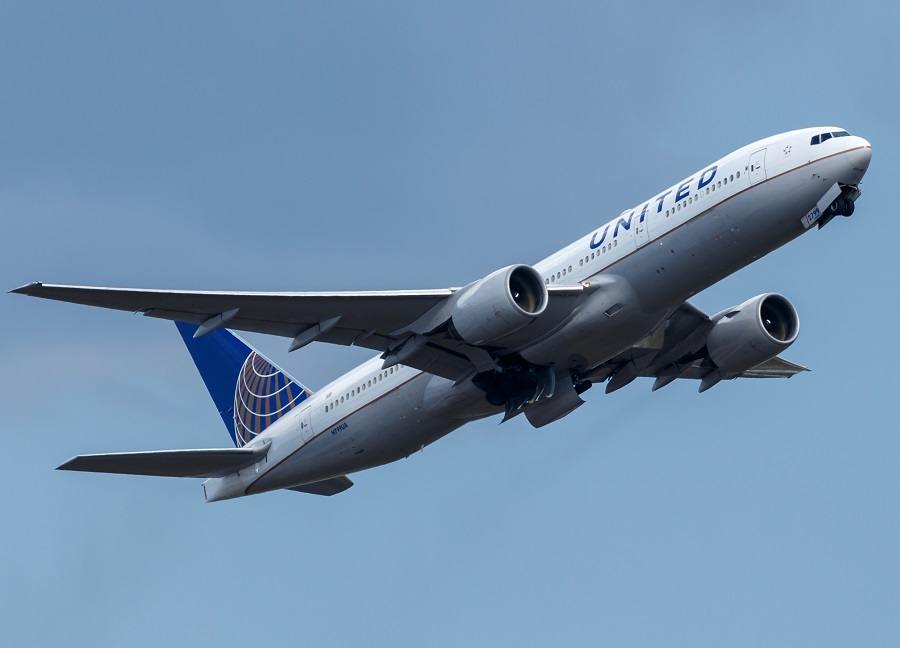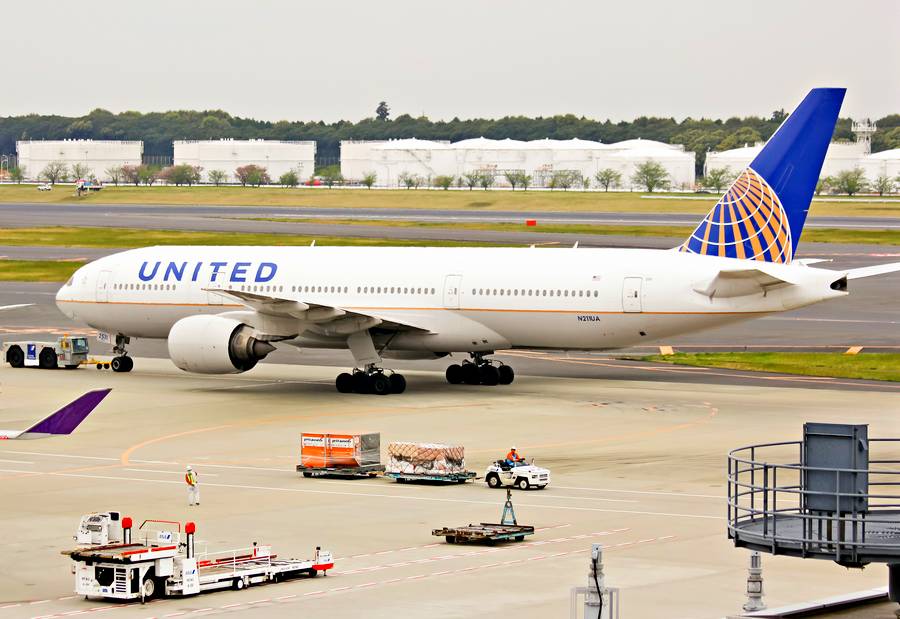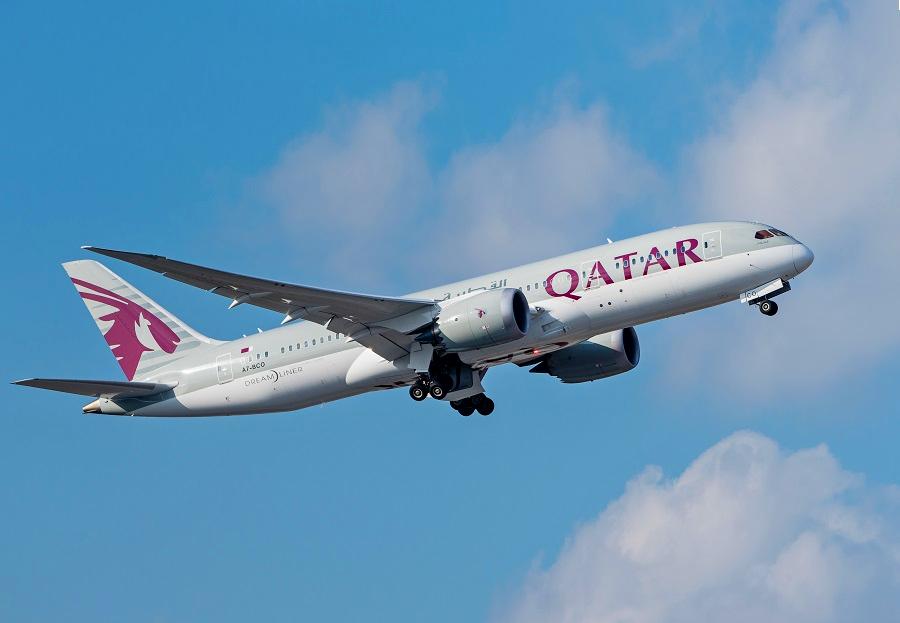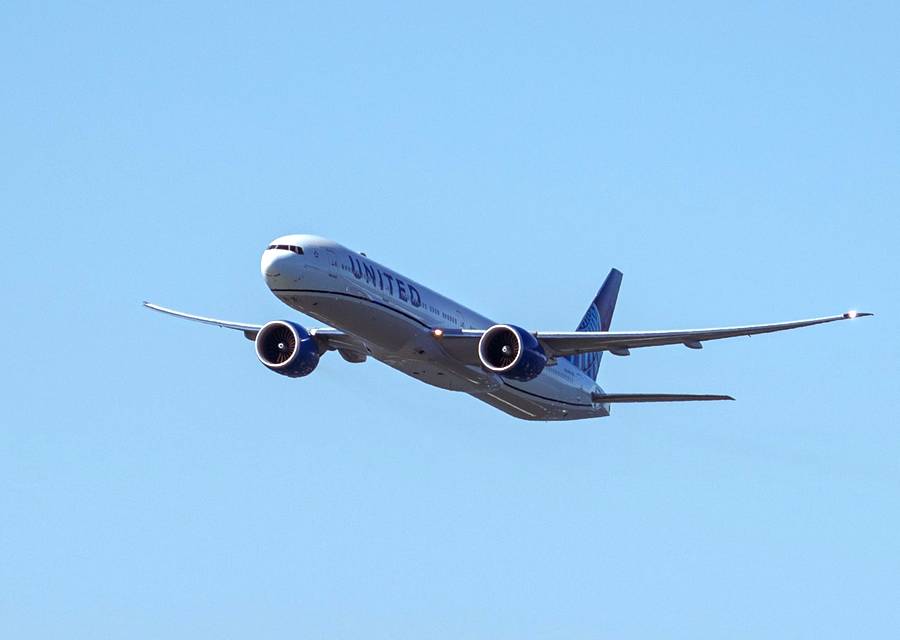A United Airlines Boeing 777 entered a dive from 2,200 feet after takeoff, coming within 800 feet of the ocean, off the coast of Hawaii.
This incident happened back on Monday the 18th of December last year. It came to light thanks to research by The Air Current, which analyzed granular data provided by Flightradar24. The event involved United Airlines flight UA1722, departing from Kahului Airport (PHOG) in Hawaii. The flight’s destination is San Francisco International (KSFO) and it lasts between four and four-and-a-half hours.

In December, this flight departed Kahului at 2:35 PM local time. We don’t know how many people were on board the United 777 on the day of this dive incident. The flight departed on time, using runway 2 in Kahului. It started climbing while maintaining runway heading, but its climb stopped at just 2,200 feet.
United 777 Enters Steep Dive
The United Boeing 777 then entered a dive, reaching a decent rate of over 8,000 feet per minute. Its crew quickly intervened, pulling the aircraft out of its dive. But the aircraft was subjected to a force of 2.7 times the force of gravity, as the pilots pulled it out of the dive. The lowest point the aircraft reached was 775 feet calibrated, or 825 feet according to its GPS.
All this was happening in challenging weather conditions. On the same day that this United 777 had this dive incident, a storm also affected the arrival of Hawaiian Airlines flight HA-35 in Honolulu International (PHNL). That flight landed safely, but there were 36 injuries during the flight, because of turbulence.
Immediately after the dive, the United 777 resumed a steep climb, initially over 7,000 feet per minute. The crew then continued their flight normally, reaching their destination on time. According to The Air Current, United confirmed the incident and stated that the pilots filed a formal internal safety report with their airline.

United ground crew inspected the 777, to confirm that it remained serviceable after the dive and the subsequent recovery before it resumed service. The aircraft remained in San Francisco for less than two hours, before its next flight, to Chicago O’Hare (KORD). The flight crew reported the incident to the FAA – but not to the NTSB. United reportedly didn’t consider it necessary to involve the NTSB, in part because there were no injuries or damage in the event.
Qatar 787: A Similar Incident?
The aircraft involved in this incident is a Boeing 777-200, with tail number N212UA. It was nearly twenty-two and a half years old during the incident. United was the aircraft’s first and only operator, taking delivery of it in July 2000. This was one of the aircraft that United had to ground in 2021, after another United 777-200 shed parts over Denver, after an engine failure. It returned to service in May 2022.

The dive and recovery incident of the United 777 has some similarities with a recent event involving a Qatar Airways 787. This happened less than a week ago, on Friday the 10th of January this year. This aircraft climbed to 1,800 feet after departure, before entering a dive. It got as low as 800 feet, reaching a descent rate of approximately 3,000 feet per minute.
As with the crew of the United 777, the Qatar flight crew recovered from the dive and continued to their destination. The authorities in Qatar are reportedly still investigating this incident. In the case of the United incident, the airline, along with the pilots’ union and the FAA, decided to provide additional training to the pilots.
Source: The Air Current





5 comments
rsilverst
I think the point Hawkins is making is why isn’t this issue something that the NTSB needs to investigate.
And I think the point Brendan is making is that United is not breaking any rules. Current regulations did not require this to be reported to the NTSB.
So both commenters are making valid points. If such an incident should be investigated, then the regulations need to change. To that point, as aircraft continue to become more and more automated, one could argue that root cause assessment of these situations may be increasingly important. At the very least it would be valuable for the manufacturer to analyze flight data leading to the incident to see if there are patterns before it leads to a crash.
I am not familiar enough with regulations to know whether the FAA report leads to such actions by the manufacturer. Anyone know?
Brendan
Again I’ll ask: where did you read United said the incident wasn’t significant enough to report?
pbmhawkins
The article specifically States in bold letters, “The flight crew reported the incident to the FAA- but not to the NTSB.”
The FAA and NTSB have separate roles and responsibilities. In order to do an RCA, the NTSB needs to be involved and have data. The FAA just makes sure rules in place and are enforced.
Brendan
Relax, Hawkins. Where did you read that United said it wasn’t significant enough to report? Not here.
pbmhawkins
DIDN’T THINK IT WAS SIGNIFICANT ENOUGH TO SUBMIT TO THE NTSB!?!!@$&@😱🫣
2.7 G and a descent to 800 ft is not significant?
Between this, the recent refusal of pilots to he recorded by investigators, and the near collision in Austin, I am not feeling very good about flying here in the US.
So much for all of Mentour Pilot’s work allaying fears of flying🫤